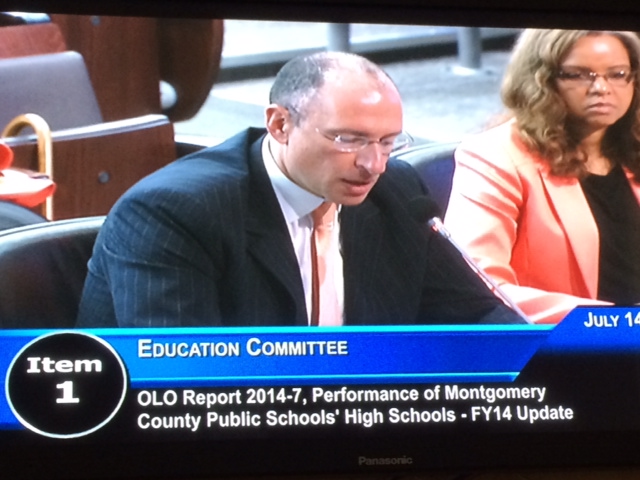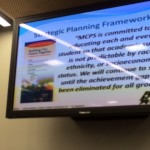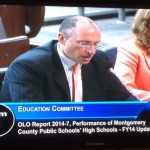
Council Questions Achievement Gap Efforts (VIDEO & PHOTOS)
As Montgomery County Public Schools (MCPS) officials touted programs and plans for closing the achievement gap between the county’s students Monday, some members of the County Council suggested redistricting as a way to make that happen.
The Monday meeting was to be a briefing for the County Council’s Education Committee, but almost every Councilmember turned up to meet with the school board and the Office of Legislative Oversight (OLO).
The three-hour meeting discussed the details in the OLO report on the achievement gap and the findings that since 2010, the share of black and Latino students attending high-poverty high schools has increased while the share of white, Asian, and non-poor students attending low-poverty high schools has increased. The report also finds that an achievement gap between high- and low-poverty high schools exists.
To squeeze that gap more than one of the Councilmembers suggested taking a look at school district boundaries.
“I am concerned about this notion that boundaries are sacred,” said Cherri Branson (D-Dist. 5). “I am very troubled by the notion that boundaries are off limits. We change boundaries all the time. People don’t like it but it happens.”
Council President Craig Rice (D-Dist. 2) said boundary changes could be one of the tools to help narrow the gap in student achievement.
“If we identify socio-economic integration is important to us, if we want to be successful in achieving this, it’s not going to be voluntary. If people get mad…. I am willing to have those discussions,” Rice said about redistricting school enrollment boundaries.
School Superintendent Dr. Joshua Starr said the challenge of closing the gap should be a multi-faceted approach with an increase in parent involvement, school support and a new early warning indicator program to launch in September that identifies which students may need help by looking at attendance, grades and behavior.
“At no time did we say boundaries are off limits,” Starr said during the meeting.
In a show of school system strides, Starr introduced Northwood High School Principal Mildred Charley-Greene who spoke about that school’s drop in suspension rates thanks to a program that lets students help drive school policy and efforts in getting kids there to enroll in college readiness programs. Starr showcased the Advancement Via Individual Determination program that helps students in that program be more involved in their education.
But, Branson called Starr out on the AVID program because she said it was limited in its scope and she said she believed MCPS was not providing full data on the achievement gap issues.
“To have the relationship of cooperation there has to be an understanding that folks are not trying to lead us down the primrose path. It requires frankness and candor,” she said.
To rebut, Starr said while AVID is only in five schools, the approach is in all. And, he said the school system asked to be involved in creating the OLO report but was “rejected.”
Chris Cihlar, director of the office, said he was not aware of Starr’s request.
East County, where many of the high-poverty schools are, is poised for big change with the White Oak Sector Plan now under review. The plan could mean an infusion of good-paying jobs and a chance for affordable housing projects- both factors that can help alleviate the achievement gap in that area. Education Board President Phil Kauffman cautioned the Council to keep schools in mind when planning for that region.
Councilmember Marc Elrich (D-At large) blamed some of the gap on flawed school testing and course preparation.
“You can’t blame the achievement gap on our teachers. I hope we don’t leave here thinking there is only one pill- that is more money- will solve this problem and not look deeper,” Elrich said.









Engage us on Facebook
Follow us on Twitter
Tweets by @mymcmedia